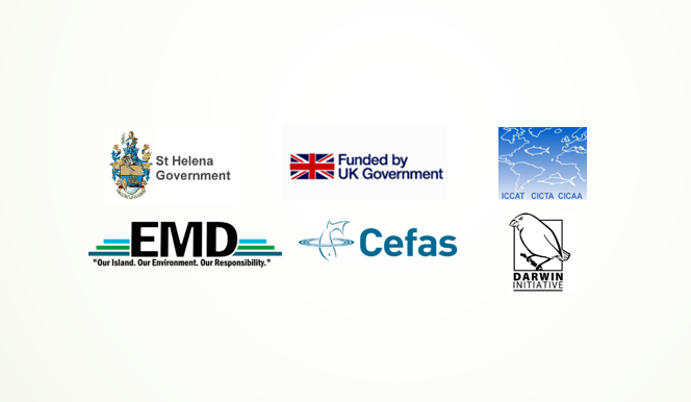8 October 2020
The Marine Section of the Environment, Natural Resources & Planning Directorate would like to inform all stakeholders and interested parties that the ‘Review of St Helena tuna fishery status and management advice’ report is now publically available and can be found on the SHG website via: https://www.sainthelena.gov.sh/government/public-information/.The report was compiled by the Centre for Environment, Fisheries and Aquaculture Science (Cefas) following a five-year period of tuna tagging across multiple programmes.
These programmes have been undertaken in conjunction with the local fishers and other stakeholders under Darwin Plus, International Commission for the Conservation of Atlantic Tunas (ICCAT) and Blue Belt programmes which resulted in a total of 7368 tags being deployed within St Helena’s 200nm Marine Protected Area (MPA). This tag data was combined with biological sampling, length, weight and stomach contents to develop a greater understanding of tuna behaviour within St Helena’s waters.
The Report provides an overview of the St Helena tuna fishery and offers evidence-based advice to St Helena Government to inform development of management and policy. Stakeholder comments have been addressed following feedback and workshops and can be found at the end of the Report.
General advice for tuna fisheries in St Helena’s Exclusive Economic Zone (EEZ):
- To date, the total quantity of tuna caught in St Helena waters, for all species, is considered to have been sustainable, at the local and international scale
- Where sufficient information has been available, for yellowfin tuna, advice is provided on catch limits that are established to ensure sustainable exploitation of the local biomass
- For the other tuna species, where information is limited, precautionary advice is provided. It is recommended that any expansion to the current fishery is implemented gradually, as a feedback process, in line with improvements in understanding
- As part of the MPA management, St Helena Government and fisheries stakeholders have agreed to fishing, using only pole and line methods. Pole and line fishing is widely recognised as the most environmentally-friendly method of catching tuna, with minimal impact on non-target species.
General recommendations are made for further collection of information required to improve any further management advice provided. New mandatory logbooks introduced as part of the Fisheries Legislation updates in 2020 will form a key part of this data gathering. Continuation of the yellowfin tagging programme was recommended, which is currently being undertaken on an ad-hoc basis by local fishers, as well as further work on bigeye tuna.
The Marine Section would like to thank the UK Government’s Blue Belt Programme, Cefas, ICCAT-AOTTP, St Helena Commercial Fishermen’s Association (SHCFA) and all fishermen that have collectively helped shape this report.
#StHelena #TunaFishery #BlueBeltProgramme
SHG
8 October 2020
